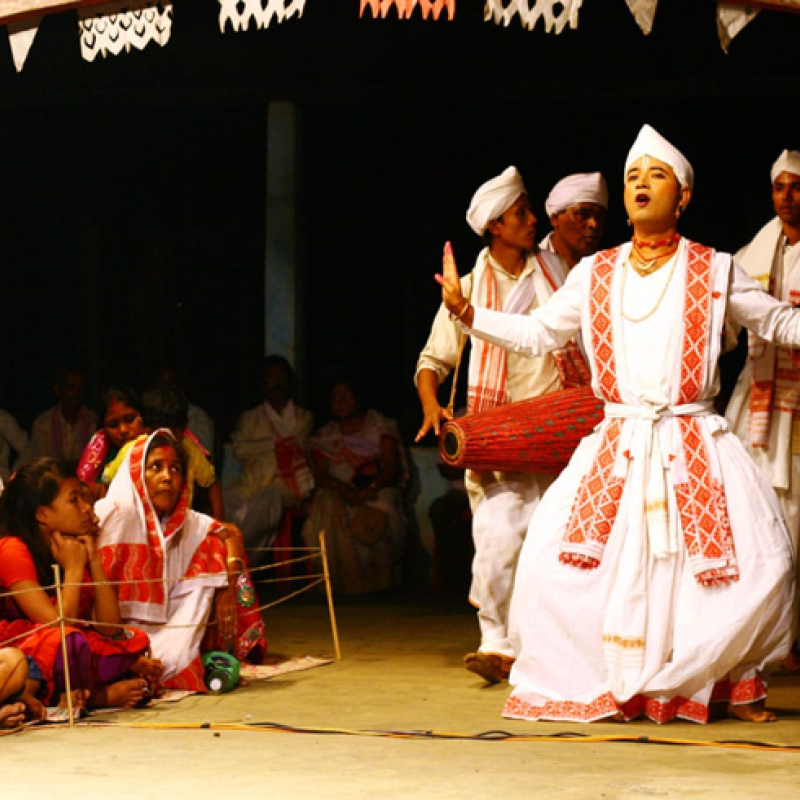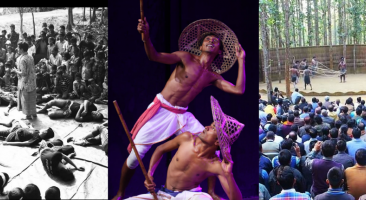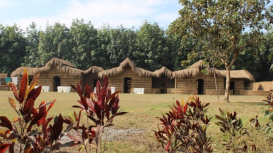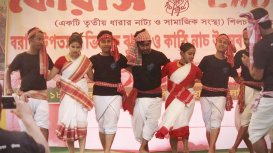Beyond the mainstream genres of theatre in Assam, experimental non-proscenium forms have taken centre stage in the last decade of the twentieth century. Indigenous folk theatre forms like ankiya naat, bhaona, mobile theatre, and proscenium theatre constituted the history of theatre in Assam till the alternative theatre of Heisnam Kanhailal in Manipur and Badal Sircar in Bengal came to the forefront. They established their own kind of political theatres in their own states, and connected theatre enthusiasts from different lands through their workshops. Kanhailal was influenced by Sircar in constructing an alternative physical language for theatre and led to a theatre movement in Northeast to revive the ethnic pride of the communities through their own theatre. Embodiment of wilderness and economy of verbal dialogue in theatrical language became the key of tribalism in Kanhailal’s ‘Theatre of the Earth’, which was fostered by many of his students from different Northeastern states with their own distinctive signatures. Kanhailal had a profound impact on theatre practices of Assam. The concept of Theatre Village, theatre in synchronisation with the rhythm of nature with collective rural living style, came into existence during the first decade of this century with Badungduppa Kalakendra and Replica Theatre Village in Assam. Badal Sircar’s ‘Third Theatre’ directly became influential in Barak Valley of Assam during 1985–86, and political theatre in open spaces came up as an intimate form by engaging the spectators as well with Gotrohin and Chorus. These practices added a new dimension to the theatrical journey of this land and besides their uniqueness in structure and philosophy they preserve a significant link. Theatre forms of resistance, alternative language for communication, reducing distance from the spectator, demolishing language barrier, using resource of nature and actor’s body extensively to deny artificial set-settings and making theatre free in all sense have brought these practices on the same plain. This module documents some of the representative theatres of this non-proscenium alternative stream and attempts to focus on the way they are linked, and relate to the bigger domain of modern Indian theatre.




